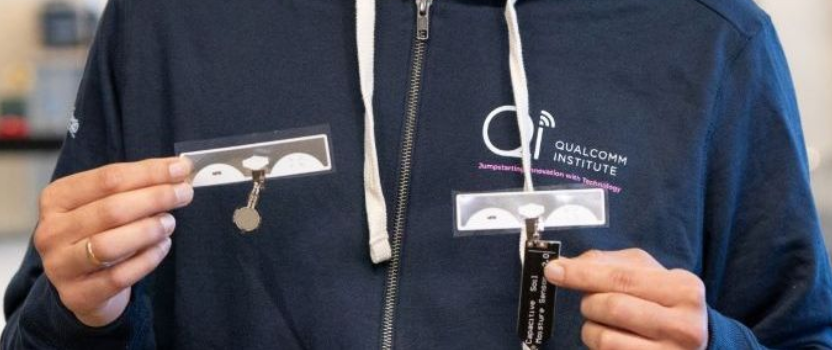In the data-driven future, sensors are seen as a bridge between the physical world and the digital world. However, most traditional sensors rely on batteries for power, which limits their widespread application and real-time sensing capabilities to a certain extent. On November 5, a research team from the Department of Electrical and Computer Engineering at the University of California, San Diego presented their research at the 22nd ACM Conference on Embedded Network Sensor Systems (SenSys 2024) held in Hangzhou, China: Using RFID tags to achieve battery-free sensing, this breakthrough research not only broadens the application range of sensors, but also opens up new paths for the future of data collection.
The core members of the research team include Dinesh Bharadia, associate professor of electrical and computer engineering, and Nagarjun Bhat, a doctoral student in electrical engineering. They found that RFID tags, which are usually used to track inventory or payment card information, actually have great potential and can be repurposed for battery-free sensing and tracking.
The working principle of RFID tags is relatively simple: they receive data from the chip and transmit it to the RFID reader, which processes the information and sends it to a computer program for interpretation. These tags are often embedded in products such as clothing and books, and as the technology becomes more common, up to 90% of retailers are using RFID technology, making the chips widely distributed and easy to obtain.
Bhat and Bharadia's research focuses on using these common RFID tags to achieve passive sensing. Traditional passive sensing methods mostly rely on analog-to-digital converters, which can measure stimuli and convert them into computer-readable digital values, but they consume a lot of power and require additional battery support. Bhat and Bharadia tried to explore a method that does not require a converter and directly uses the chip to sense stimuli.

They found that analog sensing interfaces are the key to solving this problem. Unlike digital interfaces, analog interfaces can directly convert the voltage/current changes generated by sensors into parameters of wireless signals, thereby realizing wireless transmission of data. RFID tags, as commercial, low-cost and easily accessible sensor devices, are ideal for achieving this goal.
Bhat and Bharadia's sensors are not only low-cost, but also have the ability to sense and report stimuli in real time. This means that whether in agricultural management, sports performance indicators or occupancy detection, this battery-free RFID sensor can provide more accurate and timely data support.
For example, in agricultural management, by deploying large-scale soil moisture sensors around the fields, moisture content can be measured remotely and irrigation methods can be adjusted according to current conditions. This not only improves irrigation efficiency but also reduces costs. Similarly, in the field of sports, by embedding RFID sensor tags into the soles of shoes, athletes' sports indicators such as jumping ability can be monitored in real time, providing more accurate data support for training.
In addition, this battery-free RFID sensor also has broad application prospects in areas such as parking lot occupancy detection and environmental monitoring. They can collect a large amount of inaccessible information in real time, providing strong data support for the development of the next generation of artificial intelligence.
Bharadia said: "Artificial intelligence is now everywhere, and it is driven by data provided by sensors. We are on the cusp of a revolution, and new sensors will collect data to power the next generation of artificial intelligence. The use of battery-free sensors allows us to collect a lot of inaccessible information-they can enhance data collection, and this innovation marks a truly important direction for the future."
This paper is from Ulink Media, Shenzhen, China, the organizer of IOTE EXPO (IoT Expo in China)






